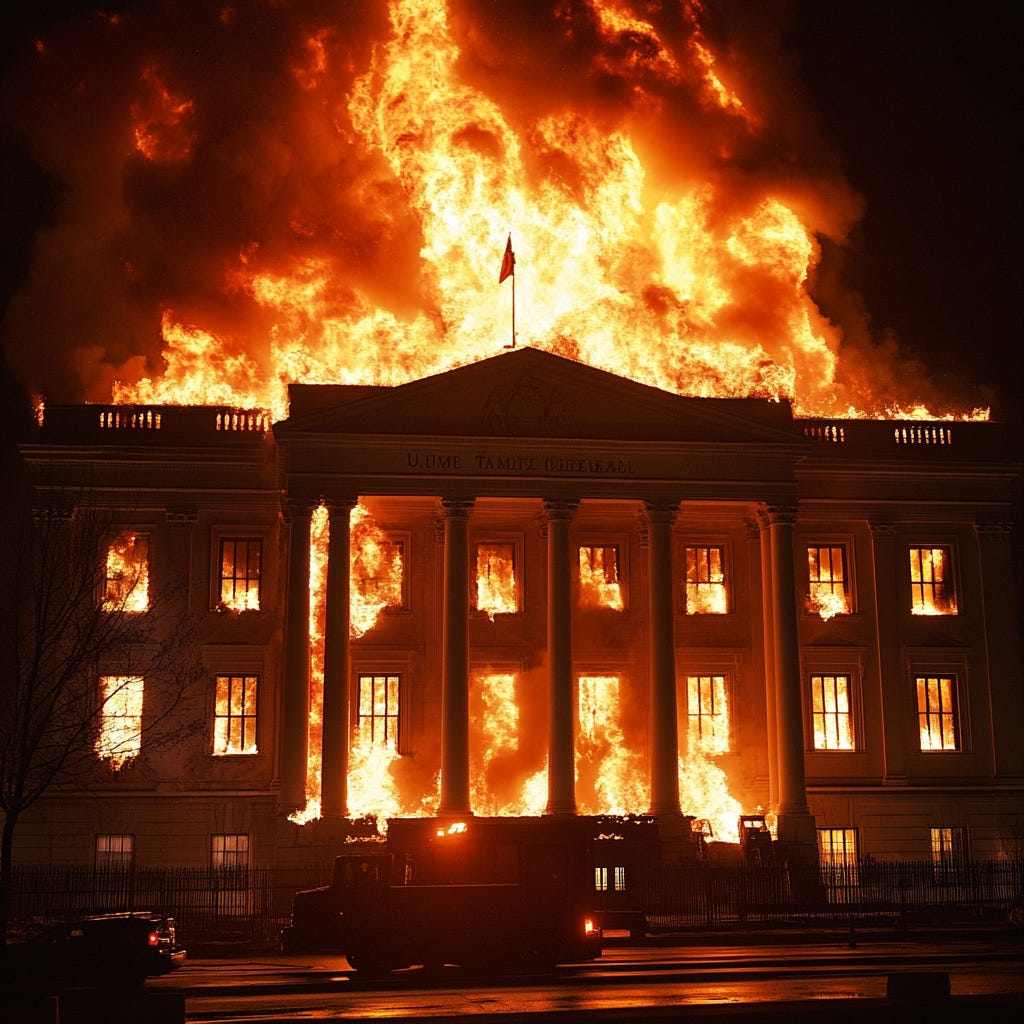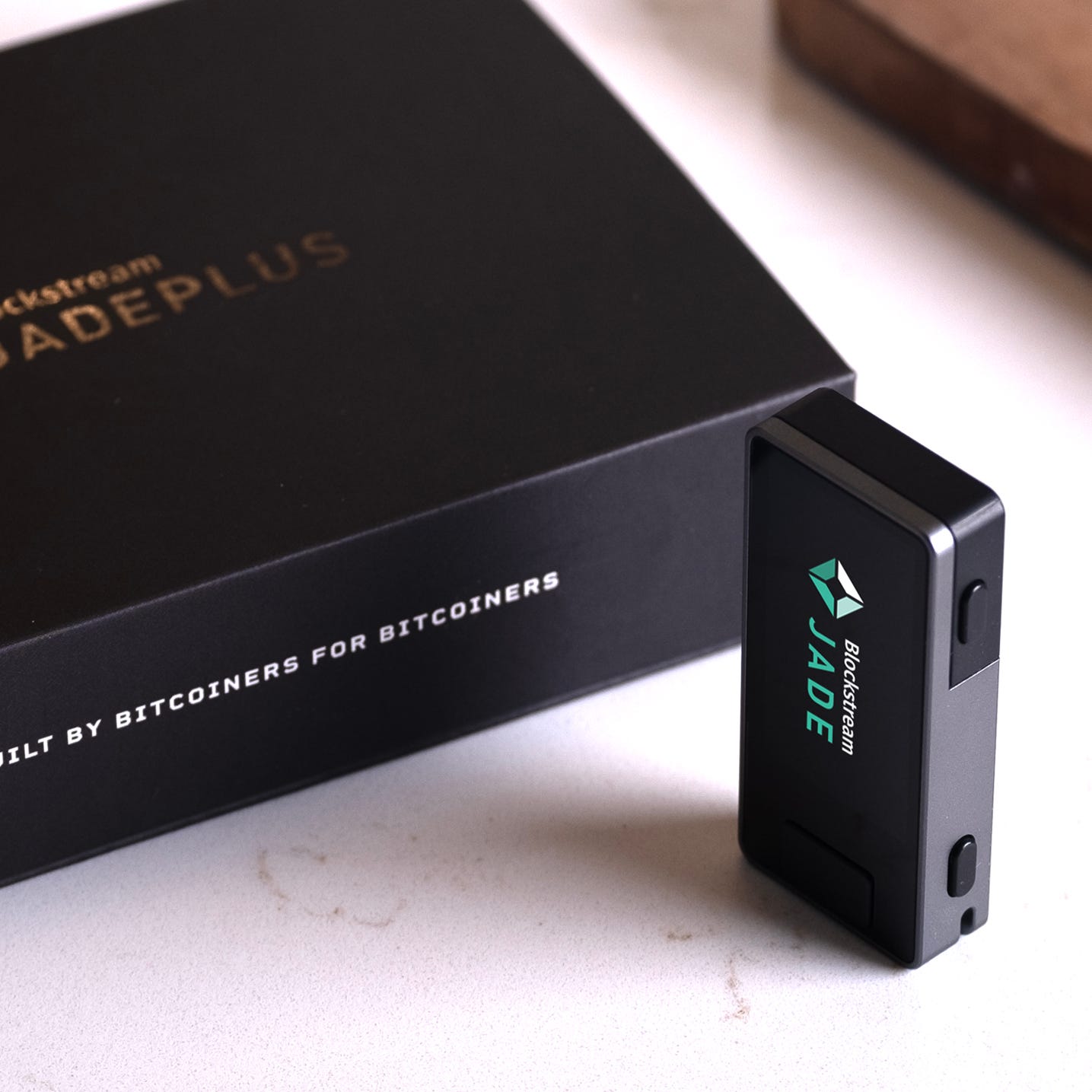Saving the Treasury
The Treasury is rapidly crossing the Monetary Event Horizon. But could Bessent and Lutnick launch a hail mary to save it?
The United States Government is on a path aimed at monetary destruction. The Treasury is currently sitting on a massive $37 trillion of debt, $1.1 trillion of interest expense per year, and $1.9 trillion deficit, all while without directly fighting a major war or dealing with an economic crisis. At the same time, the Fed has run its fastest hiking cycle in its history in order to combat the rising inflation caused by its own monetary easing wave in 2021 and 2022.
So how have the monetary authorities squared this round hole? By hiding their easing behind the scenes.
Generally, when the public hears "QE," they picture headline-grabbing asset purchases: the Fed buying trillions in Treasuries or mortgage-backed securities to keep money flowing through the financial system. These large-scale purchases, first rolled out during the 2008 financial crisis and then revived and expanded during the COVID-19 pandemic, fundamentally altered how central banks support economies. But in the post-COVID era, central banks have turned to quieter, subtler forms of liquidity injections. This is what I (and other analysts) have termed "stealth QE”, and I have written about it in several pieces, like this one here.
Stealth QE enables Powell and others to deliver monetary support and keep financial markets lubricated, all while maintaining the appearance of restraint. Appearance is the key word here- markets can continue to march upwards while the central bankers can go to press conferences and claim that policy is tightening. For those with just a cursory understanding of monetary plumbing, these claims seem to be correct.
🚨 New Course: Macro Path Released!
It’s finally here! My course on the fundamentals of Macro is now live for a limited time at a discounted price! If you’ve ever read one of my Substacks and thought, “Why didn’t they teach this in school?” — this course is for you.
I built this macroeconomics course from the ground up with one goal: to give you a real, working understanding of the modern economy — a primer on the basic theories of macro, as well as the tools that actually help you interpret markets, policy, inflation, recessions, and global trade in real time.
You’ll learn:
How GDP, inflation, and employment data actually move markets
What central banks are really doing when they “print money”
How liquidity, credit, and global capital flows shape asset prices
Why fiscal dominance, QE, and stealth bailouts are the new normal
Bonus Sections on:
Monetary Plumbing
2008 Financial Crisis
16 Macro + Banking Charts to Browse (with more coming!)
Whether you’re a retail investor, day trader, or just trying to make sense of the chaos, this course will teach you how the system actually works — and how to stay ahead of it. Only 50 people will be let in at these low prices, before I add more modules and the price rises!
📈 Sign up today and take control of your macro IQ.
🧠 No fluff. Just real, modern economics, taught clearly.
🎓 Lifetime access + updates as modules are added
Thank you for supporting my independent macro work! Now, back to the article.
In this piece we’ll discuss how the central planners schemed behind the scenes to save the monetary system in the midst of the hiking cycle. And, we’ll explore how Bessent and Lutnick could pull an unconventional financial sleight-of-hand to try and change the trajectory of the Treasury.
First, we need to grasp the mechanics of how to run Stealth QE- let’s cover some of the main methods they use.
One of the most underappreciated tools for influencing liquidity in the U.S. financial system is the Treasury General Account (TGA). Housed at the Federal Reserve, the TGA is essentially the U.S. government’s checking account. When the Treasury collects taxes or issues debt, the proceeds are deposited into the TGA. When the government spends, whether on Social Security, defense, infrastructure, or stimulus payments, those funds leave the TGA and are deposited into the commercial banking system. This transfer, seemingly mundane, has deep implications for monetary liquidity.
To understand how the TGA acts as a stealth liquidity injection mechanism, consider the monetary plumbing involved. When the Treasury draws down its TGA balance by spending more than it is taking in it injects cash directly into the banking system. This means reserves at commercial banks increase. In turn, these excess reserves support lending, risk-taking, and asset purchases. Effectively, this mimics the liquidity effects of QE, even though the Fed isn't buying any assets.
This means that the TGA is one of the few spigots that can turn financial system liquidity (aka bank reserves or settlement balances) into M2 money supply. This is crucial, because in layman’s terms it means that the Fed can ease without causing inflation as long as the Treasury is not running major deficits. In this case, the reserves will stay trapped in the financial system, since the budget is balanced and the Treasury is matching tax revenues with fiscal outlays, so no new net financing is needed.
I covered this in depth in a piece called The Singularity- please read it if you want more detail.
Historically, the TGA balance hovered at relatively modest levels, most of the time coasting below $100B. But in the aftermath of the 2008 Global Financial Crisis and especially after the COVID-19 pandemic, the Treasury began managing the TGA more actively, often maintaining balances of $1 trillion or more. These elevated balances were justified as “prudence” to manage cash needs, but they also became a macroeconomic lever.
From 2021 to 2023 for instance, the Treasury deliberately drew down its TGA balance from over $1.6 trillion to under $50 billion in just 24 months. This massive outflow represented hundreds of billions of dollars injected back into the banking system. It occurred alongside a lull in QE, which meant the TGA essentially filled the liquidity gap without attracting political scrutiny or stoking inflation fears.
Importantly, this mode of liquidity injection is not controlled by the Federal Reserve, but by the U.S. Treasury. This blurs the line between fiscal and monetary policy, a recurring theme in the modern monetary landscape as pointed out by writers such as Concodanomics. When the Fed is under pressure to pull back from balance sheet expansion, but economic conditions still demand support, the Treasury can quietly use the TGA to cushion the liquidity environment. Bessent has more power than most think.
SPONSOR:
Taking self-custody of your Bitcoin has never been more critical, and that's exactly why the team at Blockstream has created the perfect solution: the Jade Plus hardware wallet.
Blockstream Jade Plus is the simplest and most secure way to protect your Bitcoin—whether you're brand new to Bitcoin or a seasoned stacker, Jade Plus has you covered. With its sleek design, intuitive setup, and step-by-step instructions, you'll be securing your Bitcoin in minutes, not hours.
Pair your Jade Plus seamlessly with its dedicated companion app, Blockstream Green, on your mobile or desktop, and experience the easiest onboarding journey you've ever had. As your Bitcoin stack grows, Jade grows with you. Activate advanced features like the air-gapped JadeLink Storage Device, or take advantage of the game-changing QR Mode, letting you securely send and receive Bitcoin with Jade’s built-in camera, no cables needed!
Want even more security? Jade Plus supports multisig wallets using popular apps like Blockstream Green, Electrum, Sparrow, and Specter—giving you ultimate flexibility and peace of mind.
Don’t wait until it’s too late—take control of your Bitcoin now. Get your Blockstream Jade Plus, the all-in-one, Bitcoin-only hardware wallet, today.
Use Code RIOS10 for 10% off your JadePlus Wallet!
https://store.blockstream.com/?code=1e5BsVSePyfs
Now, again, back to the article!
Conversely, building up the TGA has the opposite effect: it drains liquidity from the system. When the Treasury issues more debt than it spends, essentially parking the proceeds in the TGA, it removes cash (or bank reserves) from circulation. This has happened during debt ceiling standoffs, where the Treasury temporarily halts issuance but later floods the market to rebuild its cash balance, tightening financial conditions in the process.
This dual nature, injecting and withdrawing liquidity, makes the TGA a powerful and stealthy macroeconomic instrument. It can simulate QE without ever touching the Fed’s balance sheet, and it can drain liquidity without raising policy rates.
Another way they can add liquidity is by running Operation Twist 2.0, by running some balance sheet wizardry that the Fed already did back in 2012-2014.
Keep reading with a 7-day free trial
Subscribe to The Dollar Endgame to keep reading this post and get 7 days of free access to the full post archives.






